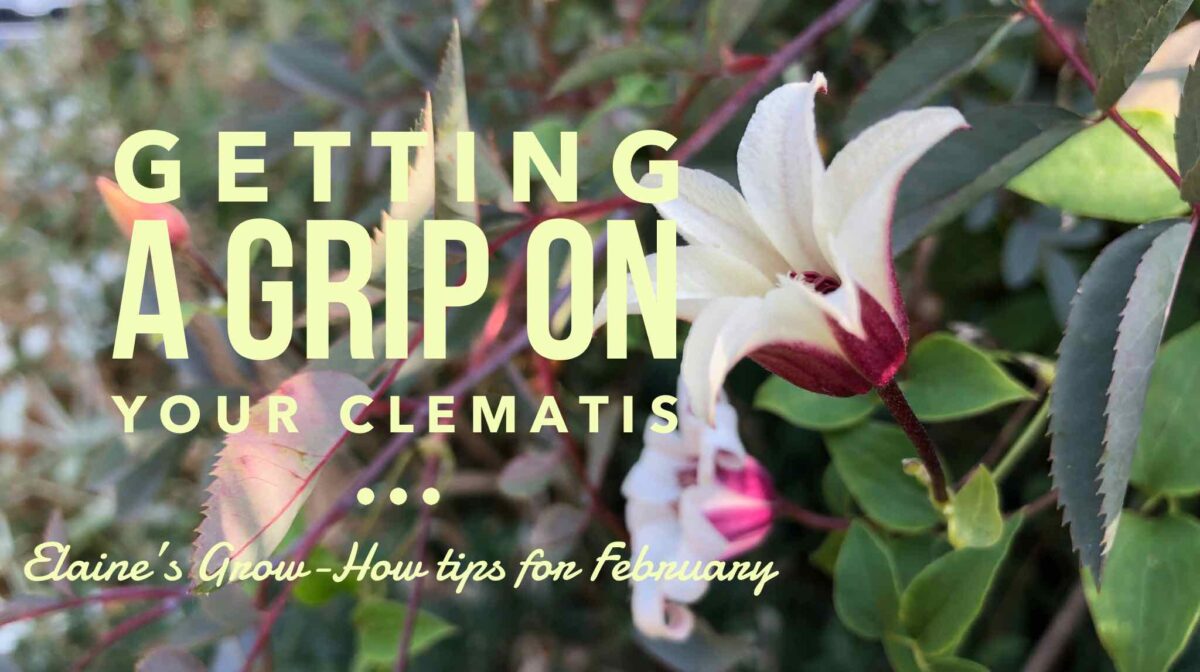
Mid-February and I just know that you are desperately in need of some tips on what to do in the garden at this murky time of year. It won’t be long before you’re overwhelmed with spring tasks, so tick off a few now and feel that you’re ahead of the game!
COPING WITH CLEMATIS
Clematis-pruning is one of those subjects that can send shivers down the spine of many a keen gardener – What time of year to do it? How much to cut off? And most of all, what happens if I do it wrong, or not at all?
So here’s my take on it. First of all, an unpruned clematis will still flower. It might be on many fewer stems and generally just at the top while possibly looking a little miserable, but it will be okay.
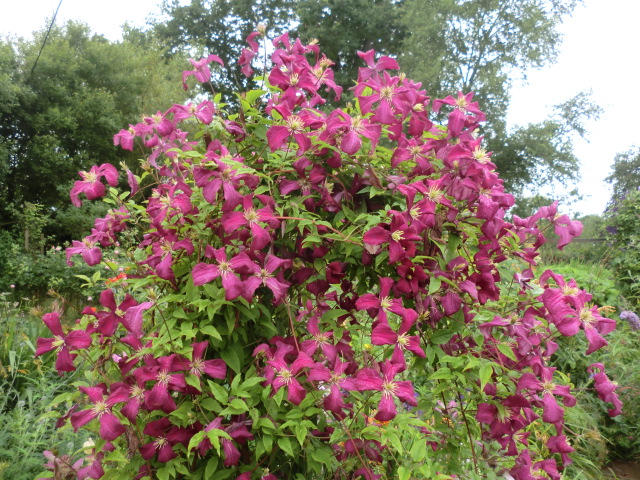
Second, in my experience it’s very hard to kill a clematis by OVER-pruning it. Eelworms, Clematis Wilt or slugs can all do a lot more damage than your secateurs I believe. By chopping at the wrong time or too severely, you’ll be cutting off that year’s flowers which would be unfortunate, but it’s not terminal.
Right. Find out what GROUP your clematis is in, of which there are three:
Group 1: includes all the lovely winter- and spring-flowerers e.g. cirrhosa, alpina, macropetala etc. If you’ve inherited a clematis that flowers before June, it’s a pretty safe bet that it’s one of these. Don’t touch these now, or bang goes all your blossom for this year. After they’ve flowered, they just need a bit of a tidy-up frankly, but I tend to be more brutal with the evergreen C. armandii, which has the propensity to be a thug, I find.
Group 2: comprises the (mostly) large-flowered early summer-flowering types, like ‘Nelly Moser’, ‘Dr Ruppel’, ‘The President’ etc. Because they, like the Group Ones, produce their first flowers on last year’s growth, what you should do now for them is to follow each stem down to a fat green bud (or a pair of them) and cut it off at a slant. Take away the dead old stems above it. Once the early flowers have faded, take them off and you may well get a welcome second flush of flowers with this group of clematis.
Group 3: The late summer-flowerers are my favourites – viticella, tangutica, texensis etc. This group includes a Growbag favourite – the dainty and pretty ‘Princess Kate’ (look at our lovely feature photo this week!) These plants tend to have smaller flowers than the the Group Twos, but they are SO generous with them, and because they only flower on the current year’s growth, you can be much bolder with your February pruning. I just cut everything off that’s above 1ft (30 cms.) tall – to a green bud if I can find one.
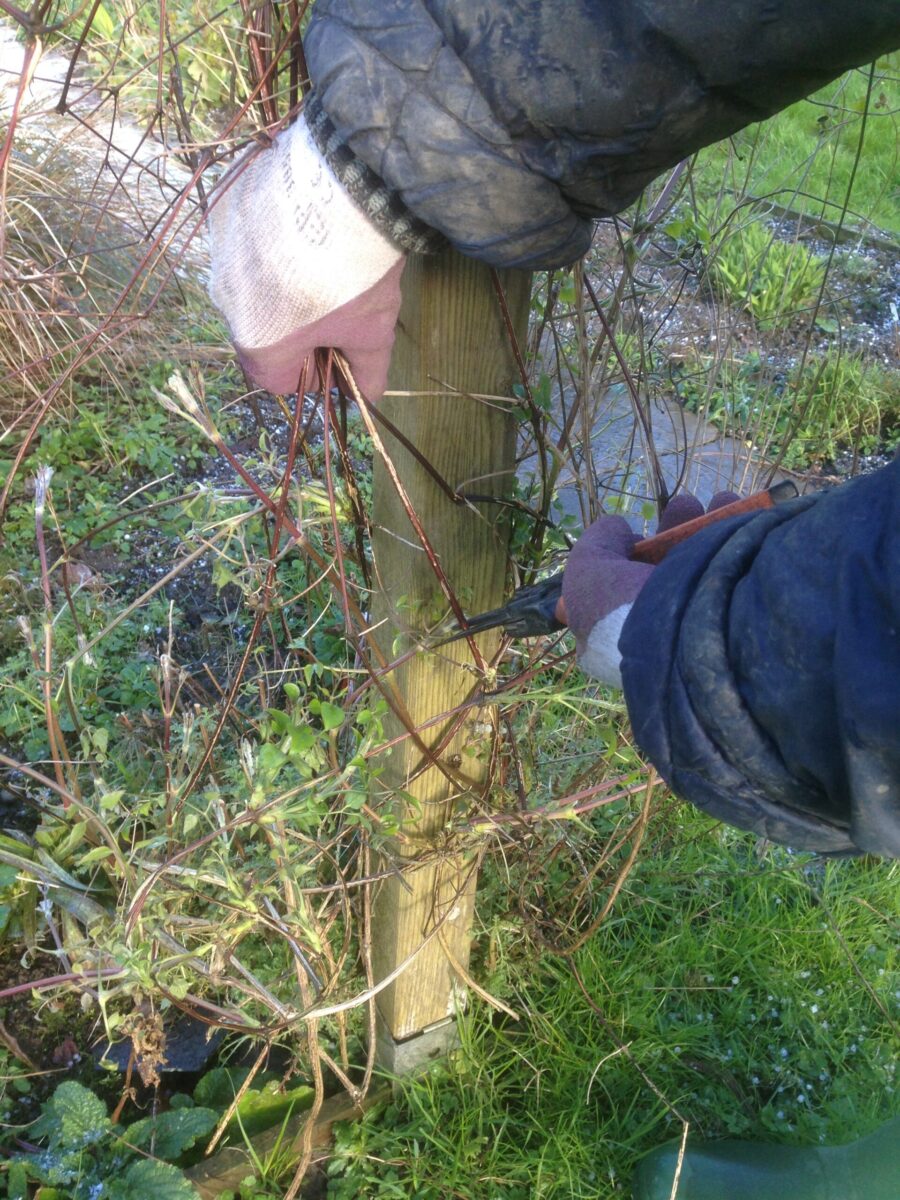
In a nutshell: Flower before June – lightly prune; Flower from July – let the stems fly!
One last clematis tip: please be very careful when you are tying in the new stems -they are heartbreakingly brittle.
STEAL A MARCH WITH LILIES AND DAHLIAS
Did you know that you can show off lily and dahlia blooms about a month earlier than your neighbours if you have a frost–free greenhouse/conservatory/random sunny place?
Fill a good-sized nice deep pot with compost mixed with horticultural grit for drainage, and mix in some some slow-release fertilizer. For lily bulbs, allow about 2in between them. The planting depth for the fancy Asiatic lilies, or for (rather unpleasant-looking, to my mind!) dahlia tubers is about the same height as the bulb/tuber itself. If you don’t know what kind they are, that’s the depth to go for. Some lilies, like the gorgeous longiflorum actually root from the top of the bulb as well as the base, and benefit from being planting at twice their depth, but don’t worry too much. One word of warning, L.auratum and L.speciosum must have ericaceous compost instead of the usual stuff.
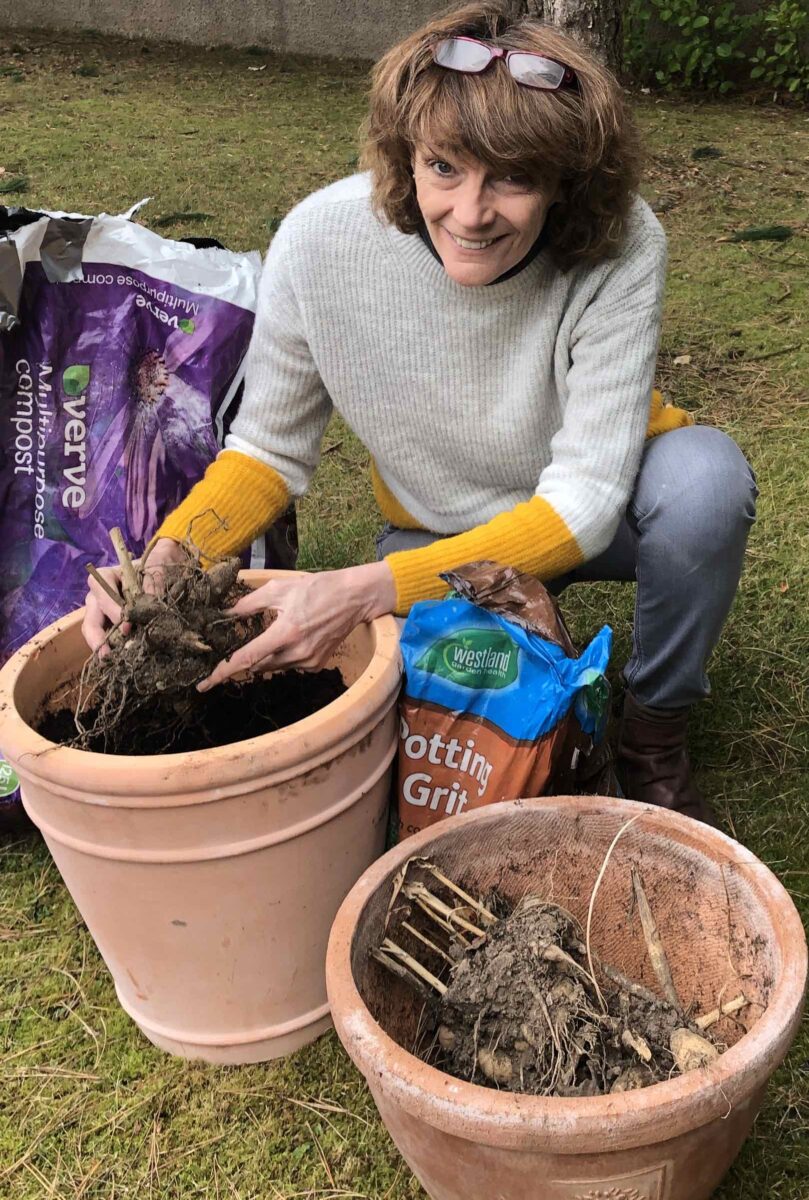
Keep the pots well-watered and frost-free, and they can sit out in the garden when the danger of frost has passed. Don’t forget to put some support in place for the tall varieties of either plant.
AUTUMN RASPBERRY PRUNING
If you are lucky enough to have some autumn-fruiting raspberries, now is the time to cut down the old canes. Cut them with secateurs right down at the base, but do watch out not to damage the new shoots which might already be emerging in amongst them.
This is also a good time to buy new raspberry canes, which you can get quite cheaply in bare-rooted bundles from a garden centre.
GARDENING SHORTS
* Laura mentioned pollarding willow in our last blog, and hazel is another great candidate for this treatment at this time. You can lop stems right back to the old framework, ready for the plant to produce lovely new stems this spring, and use the ones you’ve chopped off as bean poles!
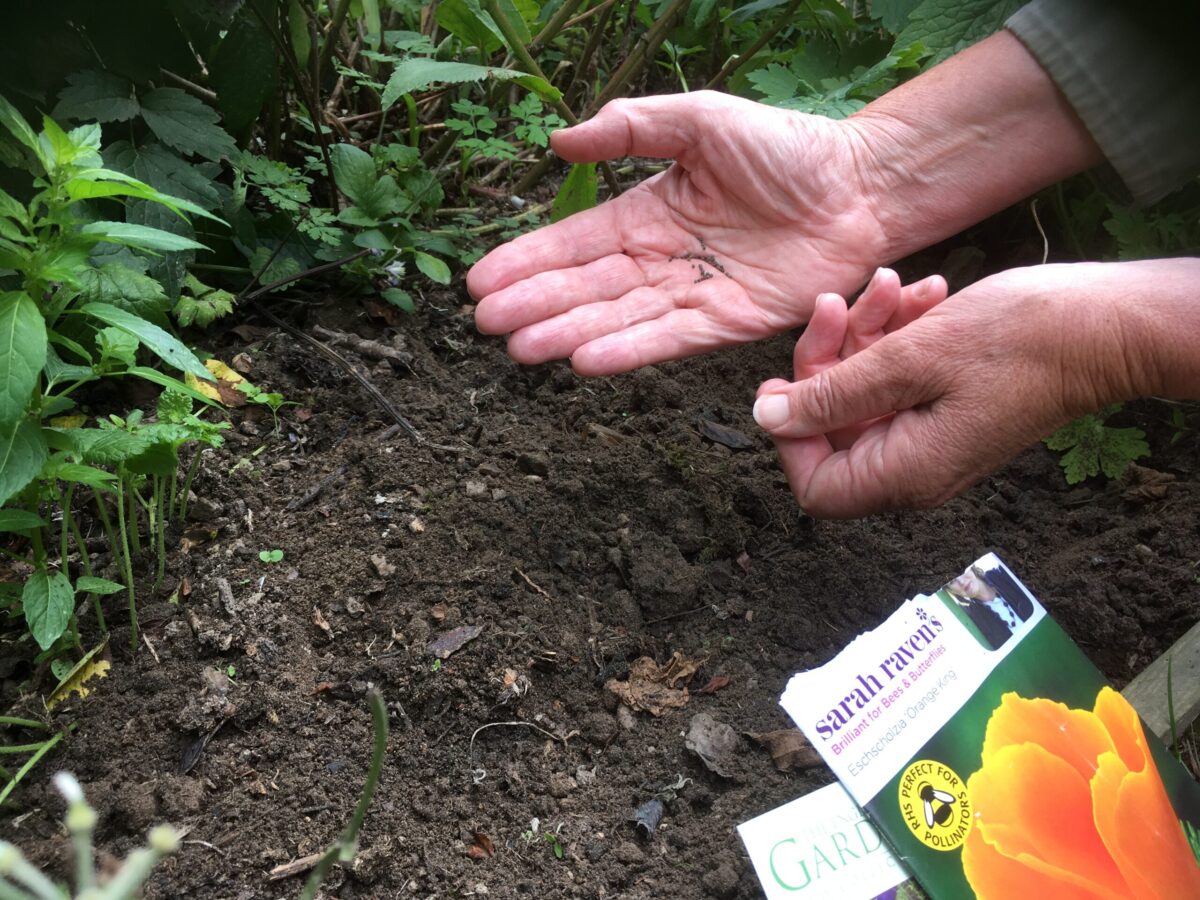
* Cut back the side shoots of Wisteria and Campsis to 2-3 buds, which will encourage them to form flower buds.
* Start sowing some Hardy Annuals like Calendula (marigold) now, which will give you early summer colour.
NB If you’re not already a subscriber and you’d like a bit more gardening chitchat from the3growbags, please type your email address here and we’ll send you a new post every Saturday morning.
